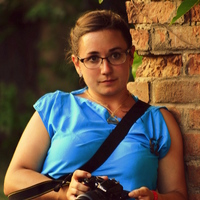- Archaeology, Archeometallurgy, Metallography, Iron tools, Roman Small Finds, Roman military equipment, and 20 moreEarly Iron Age, Late Iron Age, Roman period, Late Antiquity, typology, chronology, distribution, function, fibulae, weapons, tools, harness, metal vessels, writing equipment, balances and weights, small finds, Late Iron Age (Archaeology), Roman History, Latin Epigraphy, Ancient History, Roman Archaeology, Iron Age, Experimental Archaeology, Archaeometry, Roman Army, Archaeometallurgy, Roman military archaeology, Industrial Archaeology, Roman military history, Hoard finds, Roman Provincial Archaeology, Metalwork (Archaeology), Roman Tools, Ancient Metallurgy, and Bärbel Hanemannedit
Research Interests:
Research Interests:
Iron lamps in the Roman period, though quite rare, are not really unusual finds, just from Dacia there are 16 such objects known up until today, all being open lamps, with a more or less similar form. However, in 2015 around 50 fragments... more
Iron lamps in the Roman period, though quite rare, are not really unusual finds, just from Dacia there are 16 such objects known up until today, all being open lamps, with a more or less similar form. However, in 2015 around 50 fragments of a possible iron lamp were recovered near the principia of the military fort at Călugăreni (HU: Mikháza; Mureș County, Romania). The restoration processes made it clear: this new iron lamp is of the very rare covered type. The form, highly resembling the usual ceramic and copper-alloy oil-lamps is rather uncommon within iron lamps, only several being known from the whole Roman Empire. This paper, after putting it into context, presents this interesting small find alongside with some general notes regarding the Roman covered iron lamps, their production difficulties, and all-in-all significance.
